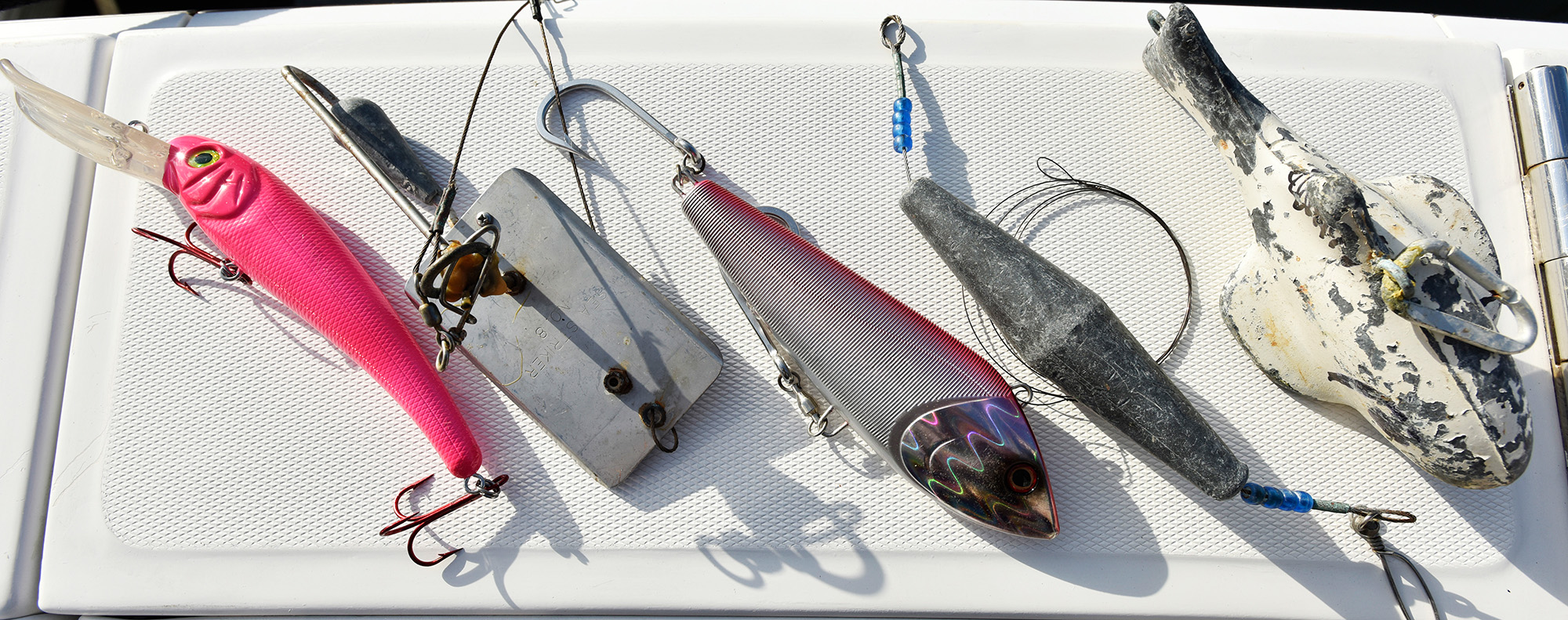July 20, 2018
By Florida Sportsman Editor
Match your deep technique to your trolling speed
 A 30-foot diver such as the Rapala X-Rap Mag 30 is a smart addition to a Florida bluewater trolling spread.
A 30-foot diver such as the Rapala X-Rap Mag 30 is a smart addition to a Florida bluewater trolling spread.
We learned long ago, that no matter where you are trolling, or what your target species, you always keep a line deep. Years ago on Northeast Florida charterboats, we always kept our old Monel wire line down, usually with a big Rebel plug or swimming mullet. Not only did we catch a lot of fish on this rig, we recorded more strikes on our surface baits every time we put it down.
Back then downriggers were decades away, and so was braided line. Today, technology has given us vastly superior ways to get baits down, but it's an interesting puzzle to figure out which method is best. The key, I think, is to match your technique to your trolling speed.
Downrigger: Slow-Troll Livies
Downriggers arrived in the Southeast about the time we started pulling live baits for kingfish. The drill is simple. Attach a 7- to 10-pound downrigger ball with a release clip, and let your bait down to the desired depth. The biggest decision live baiters need to make is, do you stay with the cable your downrigger comes with, or replace it with mono or heavy test braid? Kingfish pros swear that the cable emits an underwater hum that chases big kings away. For them, heavy (250-pound) mono works well, and at 1.5 knots trolling speed, there's not enough water pressure on the mono to raise the ball (and attached bait) in the water.
 From left: Mann's Stretch 30; planer rigged for downrigger; Yo-Zuri Bonita crankbait; in-line high-speed trolling sinker; fish-shaped downrigger weight.
From left: Mann's Stretch 30; planer rigged for downrigger; Yo-Zuri Bonita crankbait; in-line high-speed trolling sinker; fish-shaped downrigger weight.
Downrigger 2.0: 4 to 7 knots
Now, if you're pulling dead baits at 4 to 7 knots, you don't have to part with your downrigger, but you'll need a different setup if you want to get a bait deep. A downrigger ball—especially on thick mono—won't cut it. I have climbed the tower on a sportfishermen trolling 6 knots to see a downrigger with a 10-pound weight that had been set at 150 feet. It was only 10 feet deep and 140 feet back.
What works better at dead bait trolling speed is to rig your downrigger with 300-pound-test low-diameter braided line and terminate it with a No. 8 planer. Whereas a 10-pound ball moves higher in the water column every time you bump up the throttle, a planer digs deeper as water pressure increases (to a point). You'll need to secure the planer ring to the top of the bar. This can be done by using heavy cord to tie it in place. Make several wraps through the ring, until the ring is being held tightly. Then epoxy the cord in place with plenty of glue. You don't want the planer tripping at 6 knots with a big fish on the line.
At 6 knots, you've got two choices on how to attach your fishing line to the planer. You can crimp a snap swivel on the back of the planer, and then slide a No. 32 rubber band into the open snap, wrap it four times around the line, and close it in the snap. The downside to this rig is, every strike you get means you have to crank up and reset the downrigger. Another method is to simply drop the planer on either a downrigger or on 100 feet of heavy (300- to 400-pound) mono attached to a cleat. Then use either a double end snap swivel or even a shower curtain ring to hold the rubber band release. The best part about this rig is you don't have to pull the planer up when you get a strike. Just slide down another swivel. The problem with this rig is it will only go as deep as the bow in the line, which will be at roughly a little more than half the depth of the planer.
It's also important to rig your planer with a heavy cable in front of and leading from your planer to the snap swivel. Think about that the next time you spend mucho dollars for the next red hot wahoo lure. Every time I don't put cable on each end of my planer a wahoo somehow thinks it looks just like a blue runner.
Diving Plug: The Wild Card
Pulling a lipped diver beneath your surface spread is also effective. It catches fish, and it attracts fish almost as well as a deeper bait, particularly if you pull it on braid. I will never forget the time we were headed home from a fruitless day of marlin fishing off Schooner Bay in the Bahamas. It has become our custom to troll two lipped divers up the channel to the marina in hopes of catching a black grouper or a mutton for dinner. On that afternoon we were about as discouraged as we could be. We got no strikes and as we reached a depth of 70 feet both lures plunged into a solid mat of weeds. One of the anglers started bringing one of the lures in. Finally, the day was over—well, at least we thought it was. That was before the reel exploded as a blue marlin charged across the reef with a magnum Rapala and a bucket-sized gob of weeds in its mouth! FS
First Published Florida Sportsman Magazine August 2016

